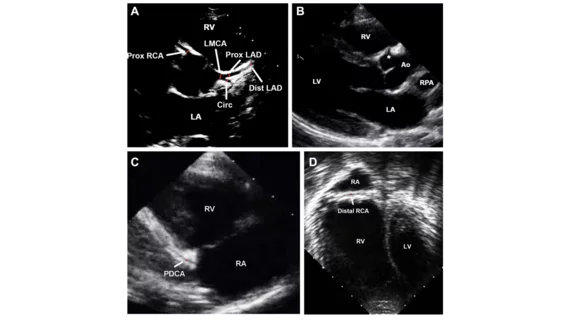American Society of Echocardiography shares updated expert recommendations on pediatric, neonatal echo
The American Society of Echocardiography (ASE) published updated guidelines on pediatric and neonatal echocardiography, updating its prior recommendations on both subjects.
The first guideline includes the ASE’s latest recommendations for performing a comprehensive transthoracic echocardiogram (TEE) on a pediatric patient. In addition to including the latest data on best practices, it also works to establish a common language that can be used by any providers evaluating children for “suspected, congenital or acquired heart disease.” The updated document was designed to provide sonographers with a quick and easy reference they can read through if any TEE-related questions happen to arise.
“In the past decade, the care of children with heart disease has evolved due to improvements in scientific knowledge and technology,” Leo Lopez, MD, chair of the guideline’s writing group, and medical director of echocardiography at Lucile Packard Children's Hospital, Standford Medicine, said in a statement. “Echocardiography has played a major role in this evolution, due to its increasing ability to provide more accurate information related to cardiac anatomy, hemodynamics, and function. The guideline helps organize the capabilities of echocardiography so that it can be used in a rational and logical way when caring for pediatric patients.”
The ASE’s last guidelines on this topic were published in 2006 and 2010. The new document, “Guidelines for Performing a Comprehensive Pediatric Transthoracic Echocardiogram: Recommendations From the American Society of Echocardiography,” is available in full in the Journal of the American Society of Echocardiography.[1]
The second new ASE guideline includes the group’s updated stance on performing targeted neonatal echocardiography (TNE) and cardiac point-of-care ultrasound (cPOCUS). The document examines both imaging options, including when providers should choose one over the other, and was designed to help care teams establish more TNE and cPOCUS programs throughout the United States.
“Close collaboration with pediatric echocardiography laboratories and the support of thought leaders in the field have resulted in the success of TNE and the establishment of neonatal hemodynamics programs,” Patrick McNamara, MD, chair of the guideline’s writing group, and professor of pediatrics - neonatology and cardiology, University of Iowa, said in the same statement.
The last guideline on this topic was published in 2011. The new document, “Guidelines and Recommendations for Targeted Neonatal Echocardiography and Cardiac Point-of-Care Ultrasound in the Neonatal Intensive Care Unit: An Update from the American Society of Echocardiography,” is also available in full in the Journal of the American Society of Echocardiography.[2]

